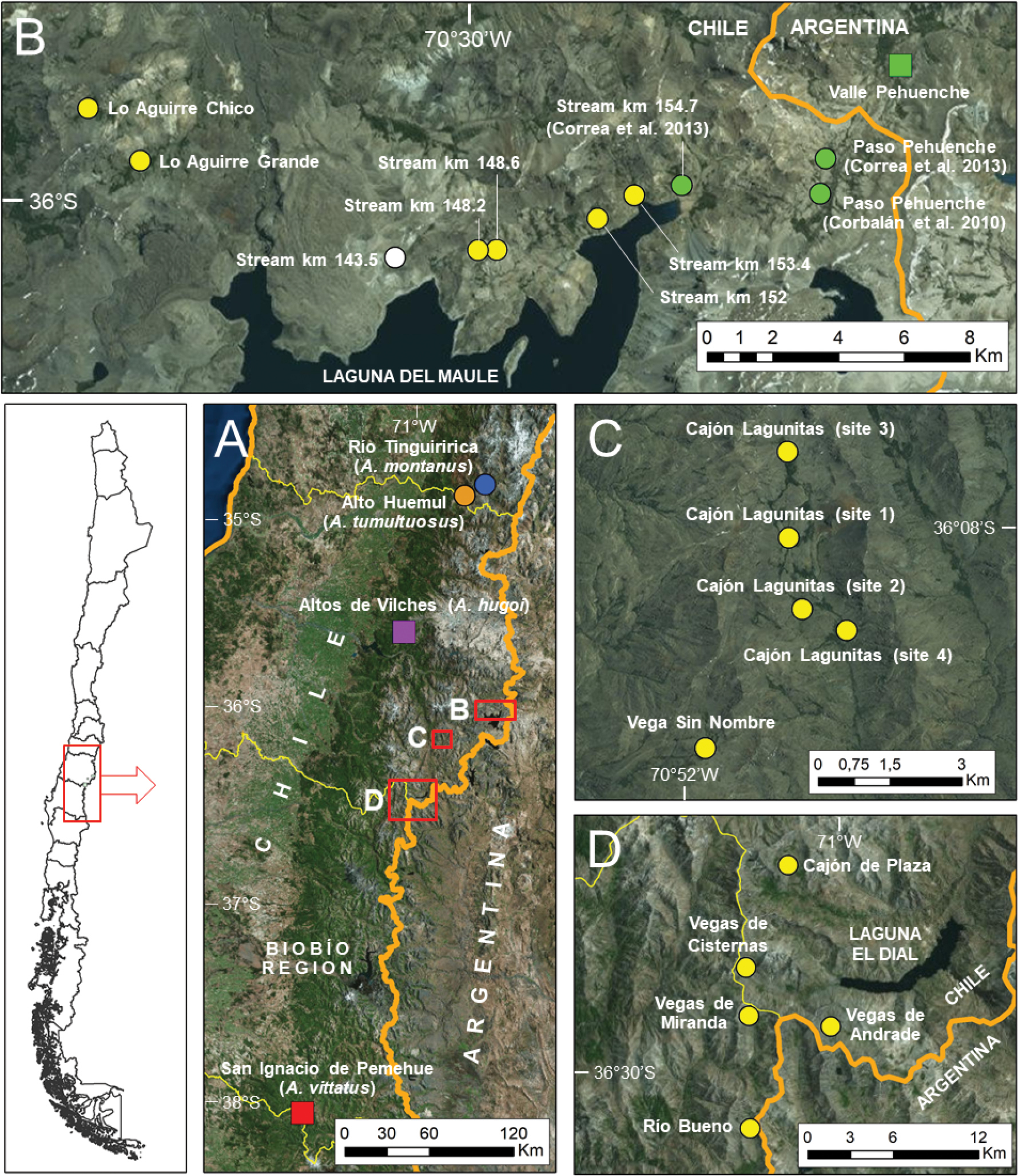
|
||
|
New and literature records of Alsodes from the Andes Range between 34°50’ and 38°05’S. Yellow circles represent the new localities reported in this study; squares represent type localities. A. Andean localities of Alsodes of the literature between 34°50’ and 38°05’S: the southernmost localities of A. montanus and A. tumultuosus, the type locality of A. hugoi, localities of A. pehuenche (within red box B, see map B) and the type locality of A. vittatus. There is a record of a putative new species related to A. nodosus in Pemehue (Alsodes sp. 1 of Blotto et al. 2013; not included in the map), presumably the same type locality of A. vittatus. Red boxes correspond to the three explored areas described in this study (maps B, C and D). B. Area explored during the first field campaign (Paso Pehuenche, Laguna del Maule and surroundings). All colored symbols correspond to localities of A. pehuenche: yellow circles correspond to new records; green circles and the square are all previously known localities of the species. The white circle is the place where no amphibian was found. C. Area and sites explored during the third field campaign (tributaries of the Guaiquivilo River). D. Area and sites explored during the second field campaign (surroundings of Laguna El Dial). See details of the localities and the populations discovered in Table 1. Orange lines represent the boundary between Chile and Argentina; thinner yellow lines indicate the boundaries of the administrative regions of Chile. |